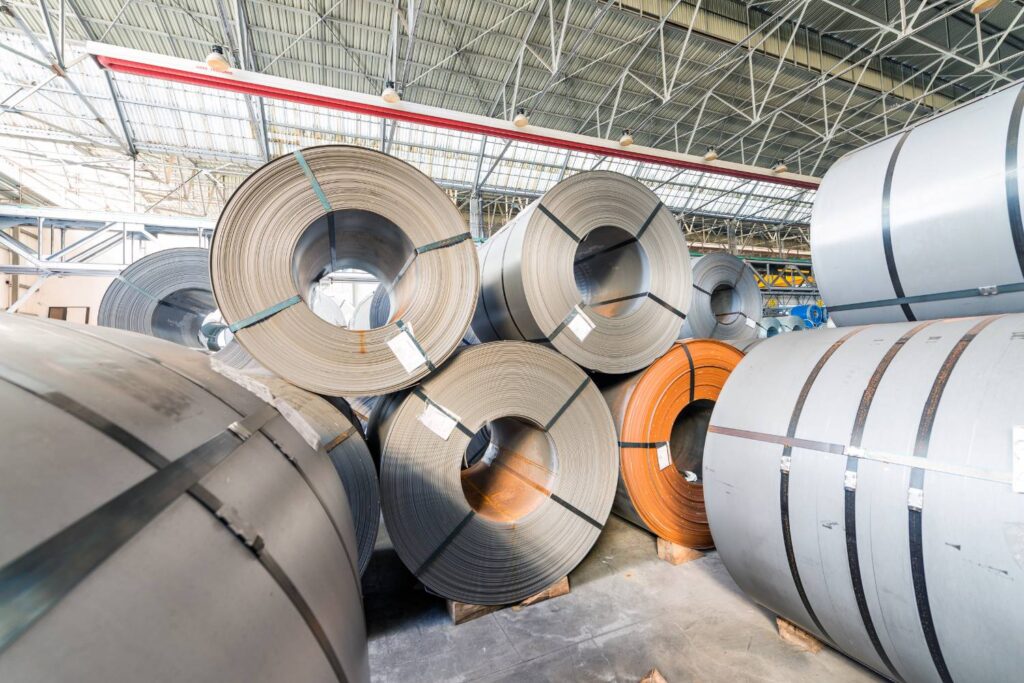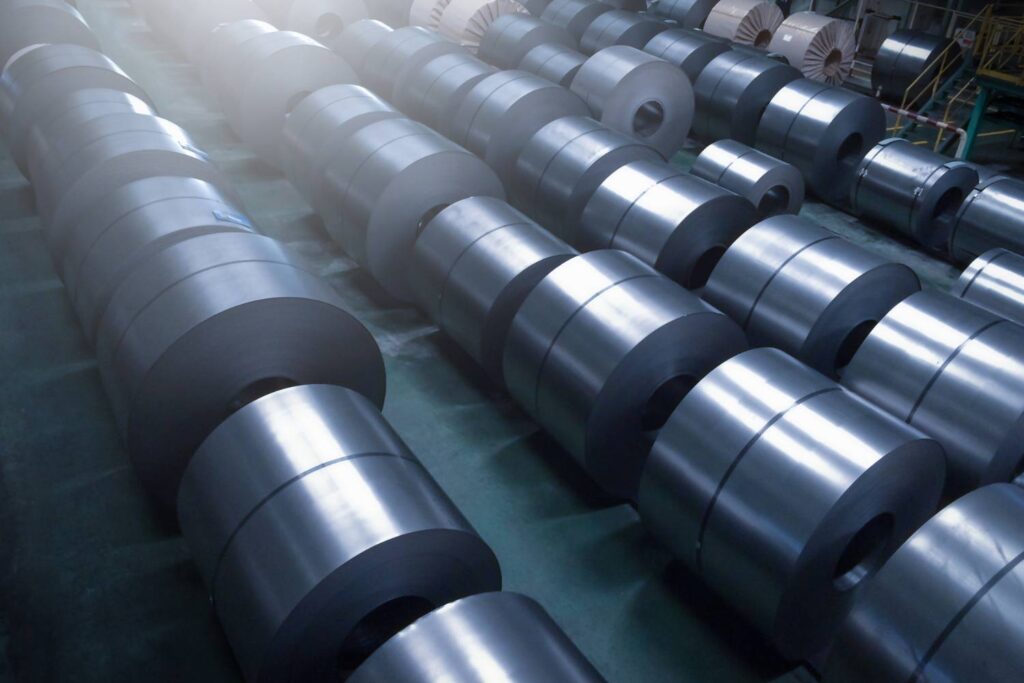Metal rolling, an integral part of any metalworking toolbox, is a fascinating and essential process that has profoundly shaped the way metal is used in a multitude of products.
From the skyscrapers that define our cityscapes to the cars we drive and countless household items, metal rolling has been a cornerstone of modern industrialisation.
Let’s talk about the origins, evolution, and future of metal rolling, uncovering the minds and milestones that have brought us to the advanced techniques used today.
Let’s get straight to the point
Metal rolling, a crucial process in metalworking, has evolved significantly over the centuries.
Its origins date back to early metalworkers who discovered that shaping metal by rolling produced stronger objects. Leonardo da Vinci pioneered early designs for rolling mills in the 15th century, laying the groundwork for future advancements.
The Industrial Revolution was a turning point, with steam power enabling larger and more efficient mills. Modern rolling mills have become highly automated, integrating advanced technologies for precision and efficiency.
The process continues to evolve, driven by technological innovations and a focus on quality.

The Genesis of Metal Rolling
Early Beginnings
The story of metal rolling begins with early metalworkers who discovered that forging metal shapes from simpler cast forms produced stronger objects than casting alone.
This realisation spurred the need for machines that could assist in shaping processes, giving rise to the concept of rolling metal between two rollers. The invention of metal rolling is not attributed to a single individual but rather evolved over centuries as part of broader developments in metalworking.
Leonardo da Vinci: A Pioneering Vision
One of the earliest recorded designs for a rolling mill can be traced back to Leonardo da Vinci in the 15th century. Known for his contributions across numerous fields, da Vinci envisioned a machine that could roll metal into sheets, showcasing an early understanding of the principles that would later become central to metal rolling.
His design included larger diameter backup rolls supporting smaller work rolls, a concept still relevant in today’s rolling mills.
The Spread of Metal Rolling
As metalworking techniques advanced, the need for more efficient ways to shape metal grew. By the 17th century, simple two-high mills with cast-iron rolls were being used to roll materials like lead and tin.
These early rolling mills were a significant step forward in metal production, setting the stage for further innovations.
Technological Evolution Through the Ages
The 18th Century: A Leap Forward
The 18th century marked a period of substantial innovation in metal rolling. Four-high mill designs were developed, driven by the discovery that smaller diameter rolls required less force to shape metal, allowing for lighter and more efficient frame designs.
This period also saw an increased understanding of the relationship between roll size and the mechanical forces involved, leading to more sophisticated rolling techniques.
The Industrial Revolution: Powering Progress
The Industrial Revolution was a turning point in the history of metal rolling. The advent of steam power at the end of the 18th century revolutionized the process, enabling the production of larger and more powerful rolling mills. These steam-powered mills began to resemble the modern facilities we see today, with their ability to exert immense force on metal.
The transition from steam to electric power in the 20th century further enhanced the capabilities of rolling mills. Electric motors provided greater control and efficiency, leading to the development of automated mills capable of producing high-quality metal products at an unprecedented scale.
Modern Developments in Rolling Technology
Today’s rolling mills are a far cry from the basic designs of centuries past. They are engineered to process a wide variety of metals, producing products that meet exacting standards in terms of dimensional accuracy, surface finish, and material properties. Innovations in material science and roll stack design have further improved the quality and efficiency of metal rolling processes, ensuring that this ancient technique remains relevant in the modern industrial landscape.
The Cultural and Technological Exchange
The Role of Cross-Cultural Influences
The evolution of metal rolling was not confined to Europe. Technological advancements from the Islamic world, Byzantium, and China played a crucial role in shaping the development of rolling techniques. These cross-cultural exchanges enriched European metalworking practices, leading to a fusion of knowledge that was instrumental in advancing the art and science of metal rolling.
Renaissance Man: Leonardo da Vinci
The Polymath of the Renaissance
Born in 1452, Leonardo da Vinci epitomized the Renaissance ideal of a polymath, excelling in fields as diverse as art, science, engineering, and anatomy. His contributions to mechanical engineering, including his early designs for a rolling mill, demonstrate his deep understanding of both the theoretical and practical aspects of metalworking.
Da Vinci’s Engineering Genius
Leonardo’s engineering designs, which included precursors to modern machines like helicopters and tanks, were underpinned by an exceptional grasp of physics and mechanics. While many of his inventions were never built in his lifetime, his ideas laid the groundwork for future technological advancements in fields such as metalworking and rolling.
The Artistic Influence on Metalworking
Leonardo’s artistic pursuits, including masterpieces like the Mona Lisa and The Last Supper, were complemented by his meticulous study of materials, including metals. His exploration of light, texture, and material properties in his art provided insights into the behavior of metals, influencing their manipulation and transformation through processes like rolling.
Biomimicry and Innovation
A pioneer of biomimicry, Leonardo drew inspiration from nature to solve complex engineering and design challenges. This approach is evident in his studies of bird flight and anatomy, which may have influenced his thinking on materials and machinery, including the early concepts that would eventually lead to innovations in metal rolling.
The Vitruvian Man: A Symbol of Integration
One of Leonardo’s most famous drawings, The Vitruvian Man, symbolizes the integration of art and science, a principle that guided his work. This intersection is crucial to understanding the development of metal rolling, a field that blends scientific principles with the art of manufacturing.
Progress and New Ideas During the Industrial Revolution
The Advent of Steam Power
The introduction of the steam engine, invented by Thomas Newcomen and later refined by James Watt, marked a pivotal shift in metal rolling. The steam engine’s ability to provide consistent, reliable power revolutionized manufacturing, enabling the expansion of rolling facilities and the production of larger quantities of metal products.
Mechanisation and the Factory System
The factory system, which emerged during the Industrial Revolution, brought about unprecedented levels of production. Innovations such as the power loom and spinning jenny, initially developed for the textile industry, demonstrated the potential of mechanization, which was soon applied to metalworking, including rolling.
Impact on Material Science
The Industrial Revolution also spurred significant advancements in material science, directly influencing metal rolling. Improved understanding and manipulation of metals led to stronger, more versatile materials, expanding their applications across various industries.
Expansion of Infrastructure and Transportation
The growth of infrastructure, particularly the expansion of the railway network, played a critical role in the development of the metal rolling industry. Efficient transportation of raw materials and finished products enabled the optimization of supply chains and opened up new markets, increasing the demand for rolled metal products.
The Rise of Specialist Professions
The factory system’s emphasis on labor specialization led to the emergence of specialist professions within the metal rolling industry. This specialization improved the efficiency and quality of rolling processes, as workers developed expertise in specific aspects of production.

Automation and Modernisation in the Twentieth Century
Recent Innovations in Metal Rolling
The metal rolling industry has seen significant advancements in recent years, with a focus on smart control systems, advanced simulation software, and safer, more efficient mills. Modern rolling mills have evolved into cyber-physical systems, monitored and controlled by industrial computers and smart sensors, allowing for real-time adjustments to rolling forces.
Modernisation in the Wire Rod Mill
The Kakogawa Works has been at the forefront of modernizing wire rod mills, integrating new technologies to enhance productivity and product quality. These advancements include more precise and efficient machinery, improved automation, and the introduction of computer-controlled processes.
The Role of Automation in the Forging Industry
Automation has also revolutionized the forging industry, increasing quality and efficiency while reducing labor costs. Companies like Southwest Steel Processing have leveraged fully automated forge shops to maintain fast lead times and produce high-quality forging components. This shift towards automation has improved safety, reduced waste, and allowed for greater customization in manufacturing.
The Future of Metal Rolling and Forging
Looking ahead, the metal rolling and forging industries are poised for further innovations. The focus will be on integrating more comprehensive process controls, predictive maintenance, and autonomous optimization. The future holds the promise of intelligent rolling mills that combine metallurgical science with digitized systems, opening new realms of efficiency and precision.
Conclusion
Metal rolling, a process integral to modern metalworking, has a rich history that blends technological advancement, artistic expression, and engineering innovation.
From its early beginnings with simple cast forms to the complex, automated processes of today, metal rolling has continuously evolved to meet the demands of various industries.
The contributions of visionaries like Leonardo da Vinci, the advancements of the Industrial Revolution, and the ongoing modernisation of the 20th and 21st centuries have all played a crucial role in shaping this vital process.
As we look to the future, metal rolling will undoubtedly continue to evolve, driven by advancements in technology and a relentless pursuit of efficiency and quality.

